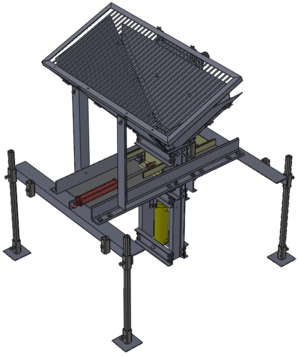CAD (Computer Aided Design): Difference between revisions
No edit summary |
|||
| Line 16: | Line 16: | ||
Head on over to the [[Development_Team/CAD_Team|CAD Team]] for more information. | Head on over to the [[Development_Team/CAD_Team|CAD Team]] for more information. | ||
== | ==Current Work, Needs and Requests== | ||
You can track the status of the CAD for different projects currently being worked on at the [[Current Work]] page. | |||
There will always be a lot of CAD that needs to get done. To see our current CAD needs and how you can help out or to put in a request for help, please head over to the [[CAD Needs and Requests]] page. | |||
== | ==Links== | ||
*[[CAD tools]] - Overview of the currently available open source CAD packages | |||
*[[CAD Discussion]] - Further discussion on some of the open source CAD packages | |||
==Research== | ==Research== | ||
Revision as of 05:52, 6 December 2011
Overview
Computer-aided design (CAD), also known as computer-aided design and drafting (CADD) , is the use of computer technology for the process of design and design-documentation. Computer Aided Drafting describes the process of drafting with a computer. CADD software, or environments, provides the user with input-tools for the purpose of streamlining design processes; drafting, documentation, and manufacturing processes. CADD output is often in the form of electronic files for print or machining operations. The development of CADD-based software is in direct correlation with the processes it seeks to economize; industry-based software (construction, manufacturing, etc.) typically uses vector-based (linear) environments whereas graphic-based software utilizes raster-based (pixelated) environments.
CAD environments often involve more than just shapes. As in the manual drafting of technical and engineering drawings, the output of CAD must convey information, such as materials, processes, dimensions, and tolerances, according to application-specific conventions.
What does CAD do for OSE?
CAD for OSE is used to share designs and manufacturing drawings accurately between designers, engineers, machinists and anyone else interested in a high level detail. It provides a level of detail of part design and assembly that is usually not available with other mediums such as video and standard text.
This wiki will also provide information, guidelines and standards for how to approach your modeling and drafting. Creating a open source document that everyone can follow will help in uniformity and universal understanding of models and drawings created in the open-source environment.
Get Involved
If you're interested in design/modeling/drafting we'd love you to join our team. OSE is always looking for help in developing the GVCS and ultimately in creating a collaborative network for all open source projects. Whether you're a seasoned engineer or brand new to CAD this is a great place to learn, share and create in an open, collaborative environment with people from around the world.
Head on over to the CAD Team for more information.
Current Work, Needs and Requests
You can track the status of the CAD for different projects currently being worked on at the Current Work page.
There will always be a lot of CAD that needs to get done. To see our current CAD needs and how you can help out or to put in a request for help, please head over to the CAD Needs and Requests page.
Links
- CAD tools - Overview of the currently available open source CAD packages
- CAD Discussion - Further discussion on some of the open source CAD packages
